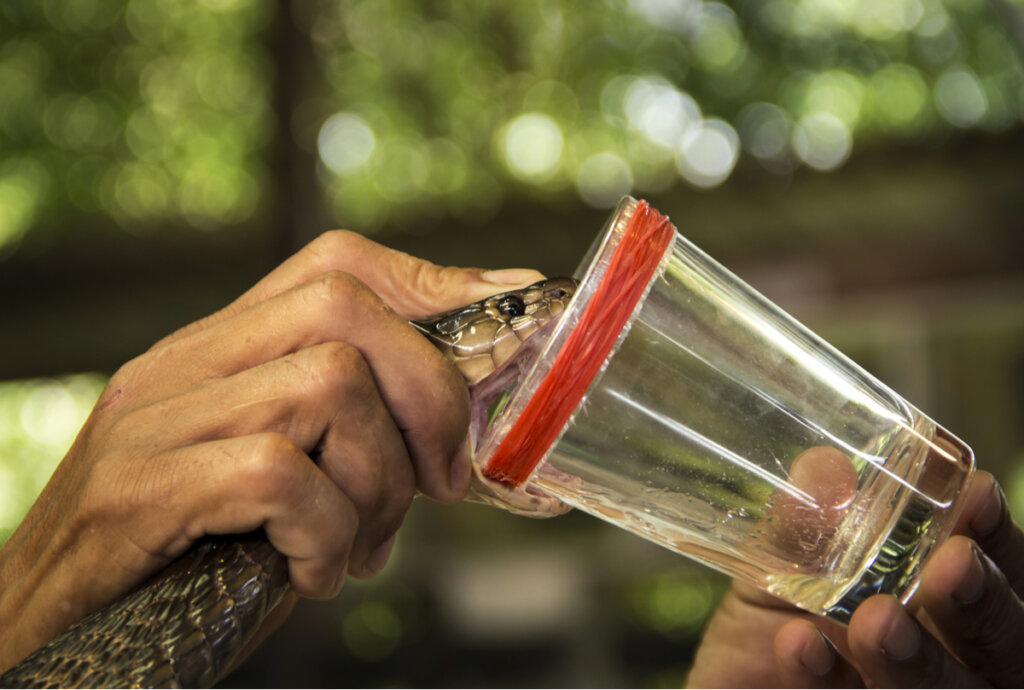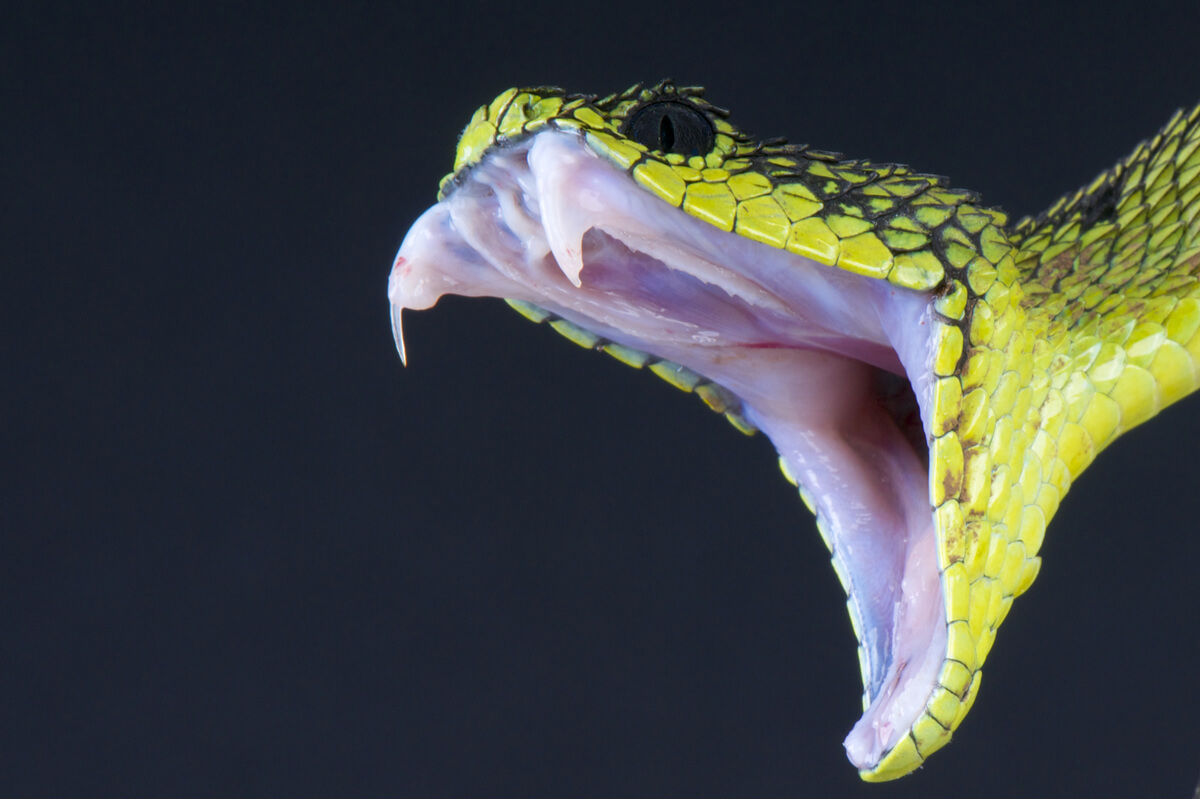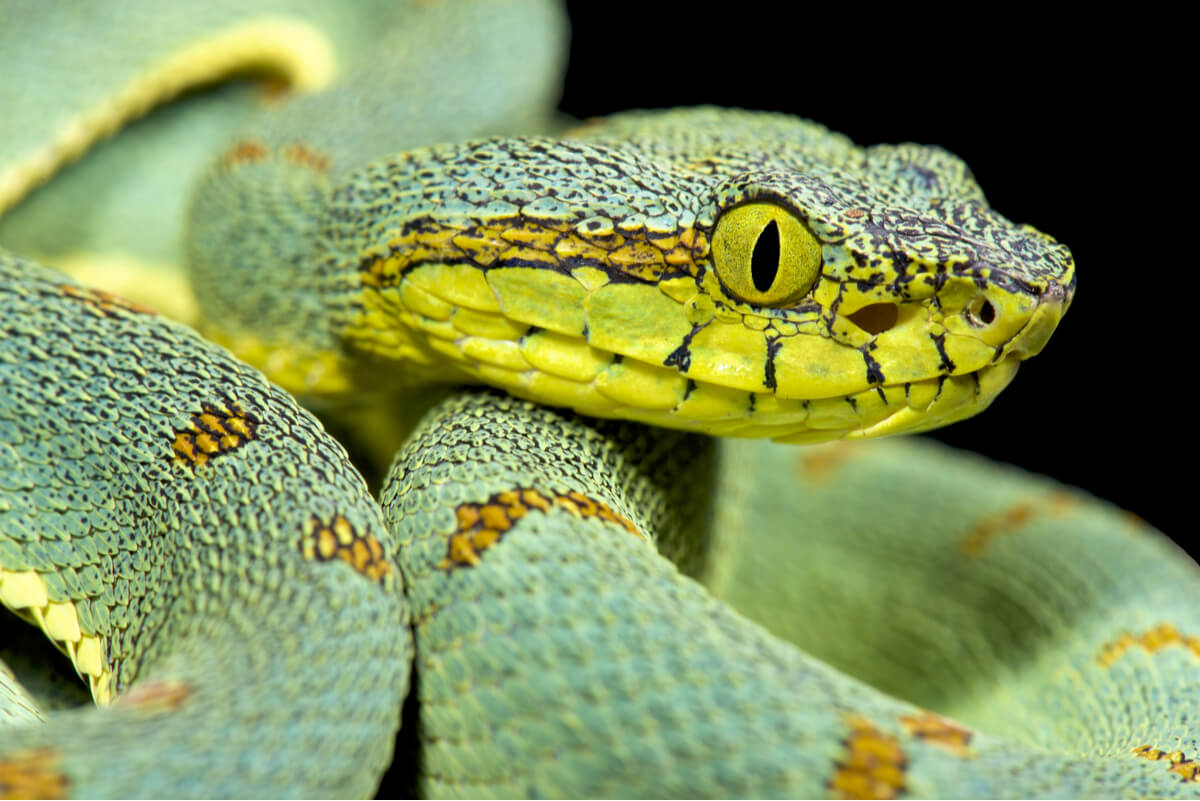Snake Bites: How to React

The snakes that humans usually keep as pets don’t carry venom or, at least, not one composed of toxins that could cause harm to other people or animals. Snake bites are much more common in countries where there are poisonous snakes that, exceptionally, enter homes.
Although the potential toxicity of the venom following an unidentified snake bite is unknown, the Center for Disease Control and Prevention (CDC) has produced a fact sheet with the steps to take if a person or pet is bitten by a snake, poisonous or not. Here we’ll tell you all about it.
First aid for snake bites
Before knowing how to deal with snake bites, you should know what to do if one is detected in the home. If the snake is a pet, surely the guardian has taken all possible measures and also knows the species of reptile he cares for.
However, if the snake is wild and not a pet, before attempting to catch or approach it, animal control services should be called. While you’re waiting for them to get to your house, you should never try to catch the animal or corner it, but it’s worth trying to monitor it from a safe distance, to see if it moves or hides.
If the snake bites someone, it’s important to remember the color and shape of the reptile. This can help in further treatment.
In the event of a snake bite, keep the person still and as calm as possible, as the increased heart rate can cause the venom to spread faster. Next, call the emergency services as quickly as possible and explain the situation calmly.
While you’re waiting for the emergency services to arrive, the following first aid can be applied to the patient:
- Sit or lay the person down so that the area of the bite is below the level of the heart.
- Try to calm the person down.
- Wash the wound with soap and water.
- Cover the bite with a clean, dry bandage.
After these steps, you just have to calmly wait for the emergency services to arrive. It takes a while for snake bites to start to affect the vital organs of the body.

How to know if the snake is poisonous or not?
Unless you’re a professional herpetologist, it’s very difficult to know for sure whether or not a snake is poisonous with the naked eye. In fact, many people believe certain myths about poisonous snakes to be true – such as poisonous snakes always having a triangular head, a certain color pattern or that they always move their tails from side to side.
However, there are some characteristics that could define a snake as poisonous. However, you have to be very close to the animal in order to observe it. As you can imagine, getting too close to a potentially dangerous reptile is never a good idea.
The eyes of poisonous snakes generally have elliptical pupils, while those that aren’t, have circular pupils. However, there are exceptions, and the coral snake – family Elapidae – has rounded pupils and is highly poisonous. Poisonous snakes also have a longer distance between the width of the head and the neck.
The presence of a rattle at the end of the tail indicates that the reptile is dangerous, as there are no non-poisonous rattlesnakes. Apart from this, few characteristics are unique to poisonous snakes. Only by knowing which particular species it is will a person be able to identify them.
What to do if a snake bites your pet
If, unfortunately, a snake should bite a pet, the steps to be followed are no different from those already mentioned with a human being. However, the situation may be somewhat more urgent, as the low body weight of domestic animals – compared to that of an adult human – does complicate the situation.
In these cases, you mustn’t wait for a veterinarian to arrive; you should take the pet to the nearest veterinary center. However, you should also try to remember the type of snake that bit your pet.
Without losing your calm, hold the pet in your arms so that the area of the bite is below the level of the heart. Once you’ve done this, go urgently to the nearest veterinary center.
What not to do when faced with snake bites
As a general rule, whether the snake bites a person or a pet, there are a number of things you should never do:
- The snake should never be picked up – you should never try to catch it.
- A tourniquet shouldn’t be applied over the bite.
- You shouldn’t cut the wound with a knife to try to extract the poison.
- Under no circumstances should you try to suck the poison with your mouth.
- Don’t apply ice or heat to the wound.
- You mustn’t take any type of pain reliever, nor energy drinks.

Snake bite prevention
The best protection against snake bites is to try to do everything possible to prevent them in the first place! You should, of course, never have poisonous snakes at home to start with. It may sound obvious, but you’d be surprised! In addition, these types of snakes are illegal in most countries around the world.
When floods occur in areas adjacent to the urban nucleus, especially in the breeding season of these animals, make sure you never walk through these areas, especially if they have dense vegetation. Snakes usually hide away in dense areas, where they feel protected.
There will always be situations where accidents can’t be avoided and a person or pet ends up with a serious injury, but this is not at all common.
The vast majority of snake bites can be avoided by treating these animals with due respect.
All cited sources were thoroughly reviewed by our team to ensure their quality, reliability, currency, and validity. The bibliography of this article was considered reliable and of academic or scientific accuracy.
- Reid, H. A., & Theakston, R. D. G. (1983). The management of snake bite. Bulletin of the World Health Organization, 61(6), 885.
- Russell, F. E. (1980). Snake venom poisoning. Philadelphia, 18, 139-234.
- Warrell, D. (2014). Venomous and poisonous animals. In Expedition Medicine (pp. 235-250). Routledge.
- Bjarnason, J. B., & Fox, J. W. (1995). [21] Snake venom metalloendopeptidases: Reprolysins. Methods in enzymology, 248, 345-368.
- Venomous snake: AID kit, CDC. Recogido a 12 de mayo en https://www.cdc.gov/niosh/topics/snakes/symptoms.html#:~:text=Lay%20or%20sit%20down%20with,with%20a%20clean%2C%20dry%20dressing.
